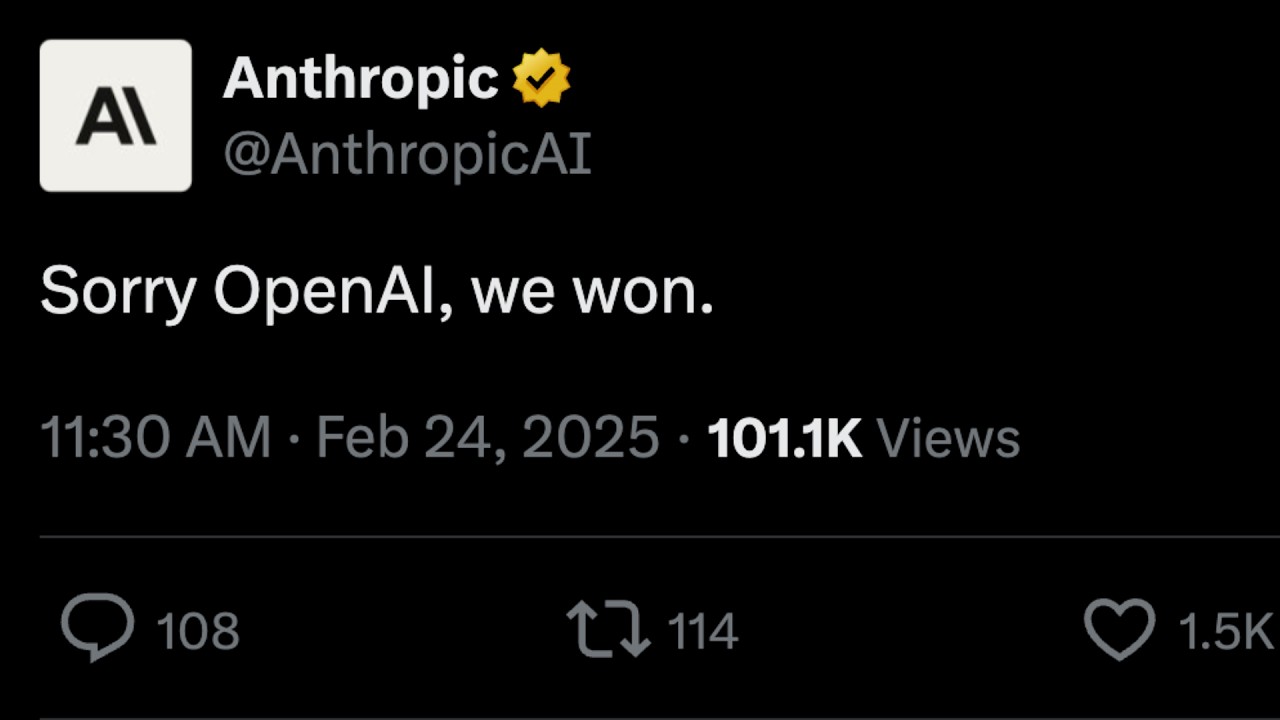The video discusses the release of Claude 3.7, an advanced AI model from Anthropic that excels in coding tasks and introduces a “thinking mode” for improved reasoning, although it sometimes struggles with certain challenges. The presenter highlights its strong performance in benchmarks, particularly for developers, and showcases its new command-line interface, Claude Code, which aids in code refactoring despite its high cost.
In the video, the presenter discusses the release of Claude 3.7, a new AI model from Anthropic that has garnered significant attention for its capabilities, particularly in coding tasks. The model is noted for its high performance, which the presenter believes justifies its steep price—three times that of Claude 3.5. Claude 3.7 introduces two modes, including a “thinking mode” that allows for more transparent reasoning processes, although the presenter notes that it behaves differently from other models like OpenAI’s. The video emphasizes the model’s advancements in handling code-related tasks, making it a top choice for developers.
The presenter highlights the competitive landscape of AI models, referencing a recent benchmark by OpenAI that evaluated various models’ performance on real-world tasks sourced from Upwork. Claude 3.5 outperformed OpenAI’s models in several categories, and the presenter anticipates that Claude 3.7 will further extend this lead. The benchmarks reveal that Claude 3.7 excels in application logic problems and server-side logic, showcasing its capabilities in a variety of coding scenarios. The presenter expresses excitement about the model’s potential, especially in light of its new features.
One of the standout features of Claude 3.7 is its ability to utilize tools effectively, which enhances its performance in complex tasks. The presenter explains that the model can interact with external APIs and tools, allowing it to perform tasks that require multiple steps and interactions. This capability is particularly beneficial for developers who rely on AI to streamline their workflows. The video also touches on the importance of accuracy in these interactions, noting that even small percentage improvements can lead to significant gains in overall performance.
The discussion then shifts to the “thinking mode” of Claude 3.7, where the presenter shares personal experiences using the model for challenging coding problems. While the model shows promise, there are instances where it struggles with certain tasks, leading to unexpected outputs. The presenter notes that the model sometimes produces better results when not using the thinking mode, suggesting that the reasoning process can occasionally hinder performance. This observation raises questions about the balance between reasoning and direct output in AI models.
Finally, the video concludes with a demonstration of Claude Code, a new command-line interface for interacting with codebases directly through Claude. The presenter showcases how the model can refactor code and implement changes effectively, although it notes that the process can be slow and costly. Despite the high price point, the presenter believes that Claude 3.7 is a valuable tool for developers, especially for those tackling complex coding challenges. The video encourages viewers to try out the model through T3 Chat, emphasizing its potential to enhance productivity in software development.
